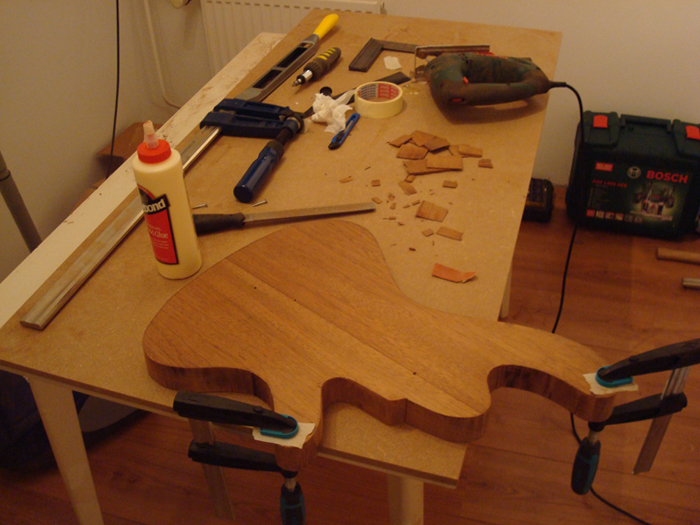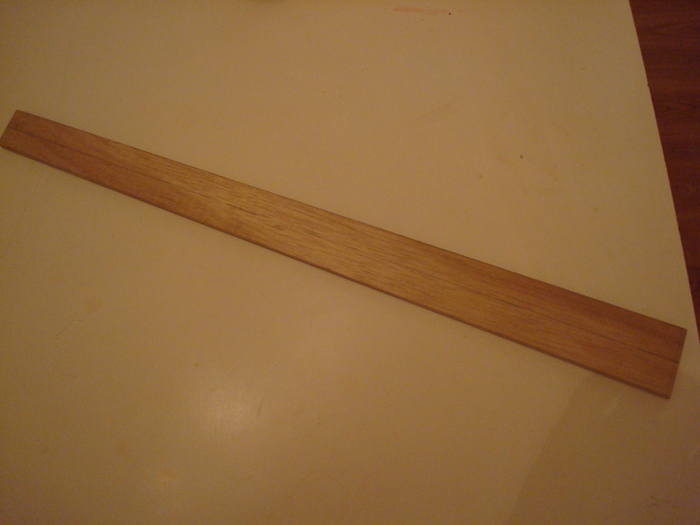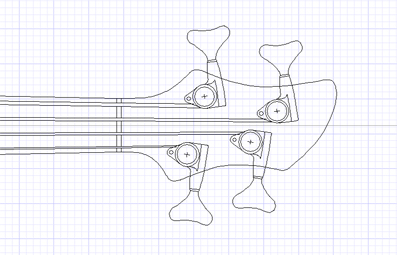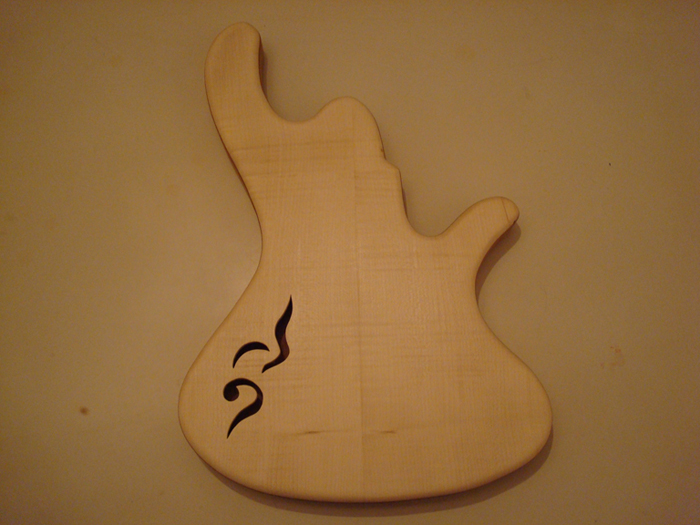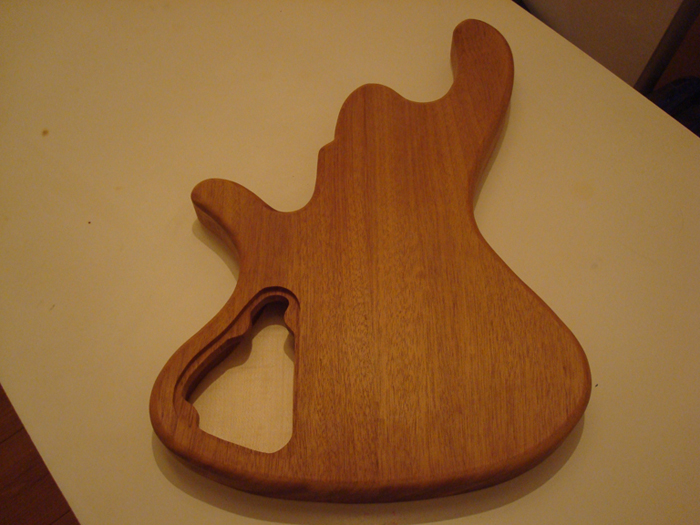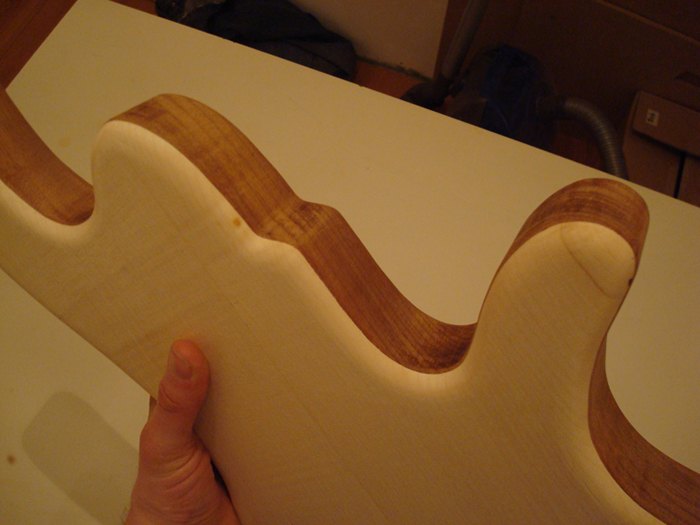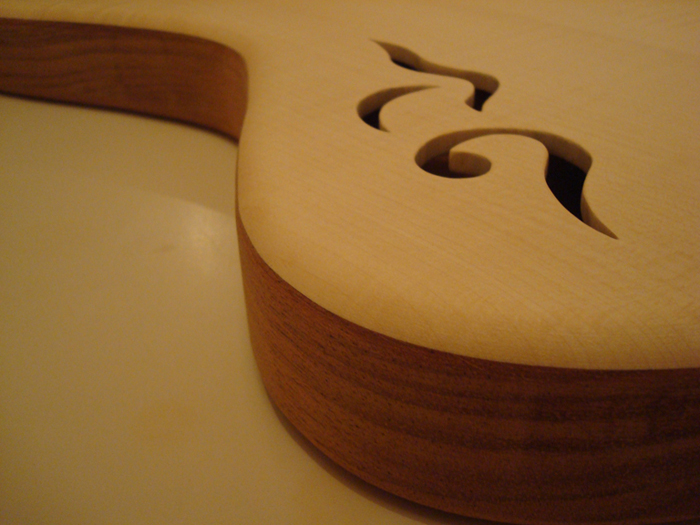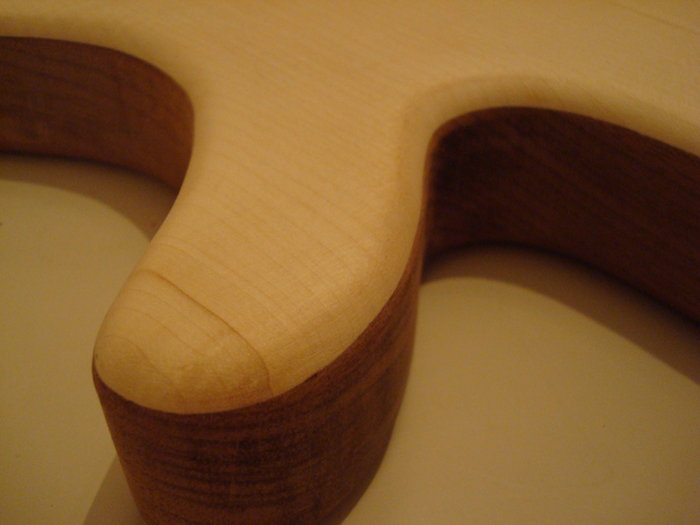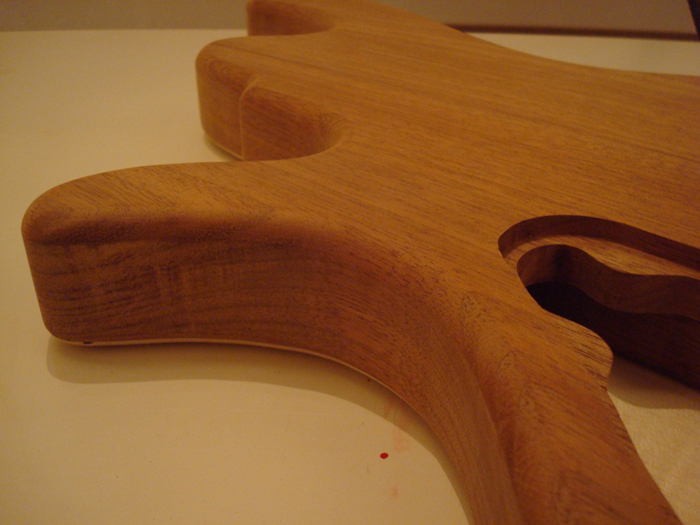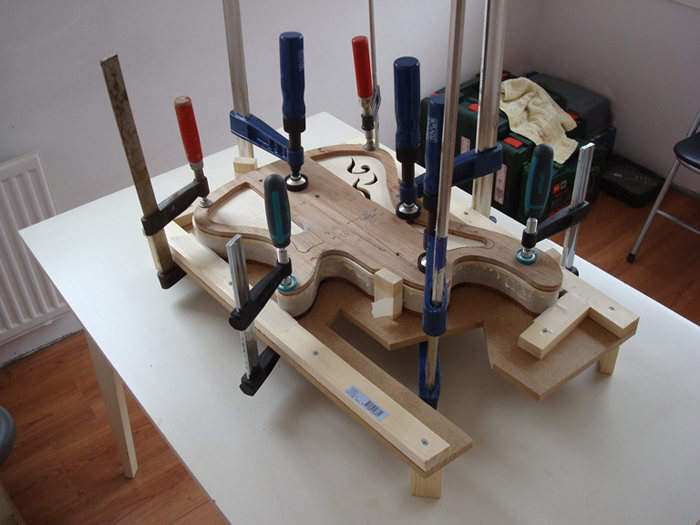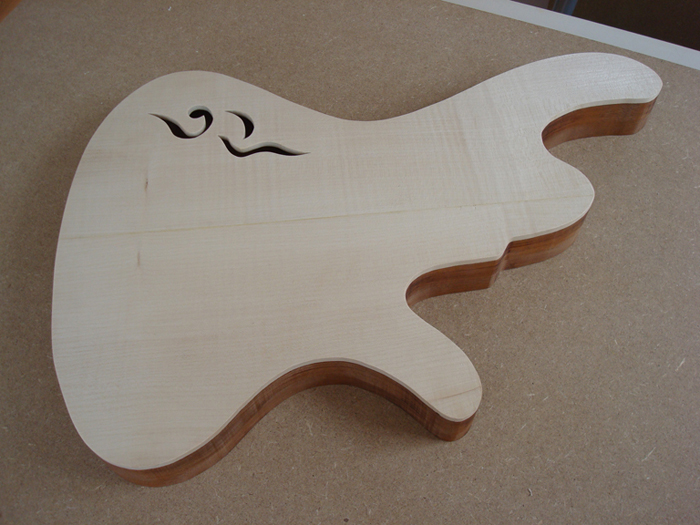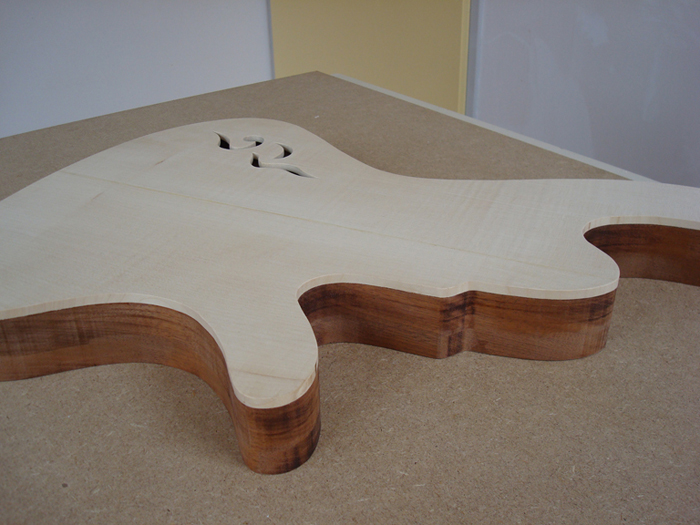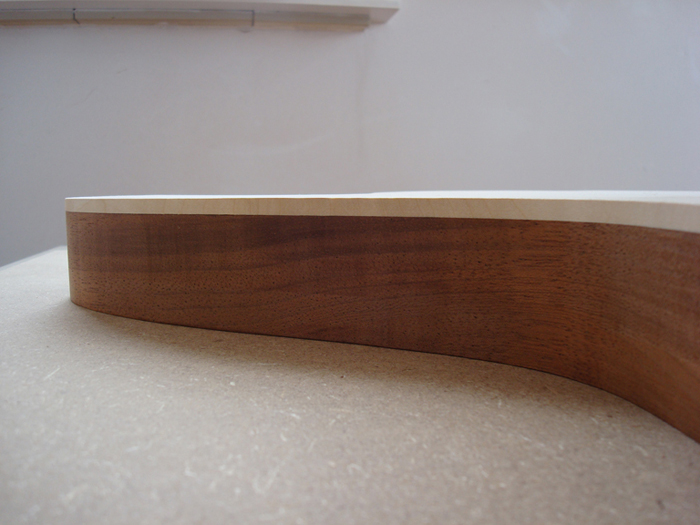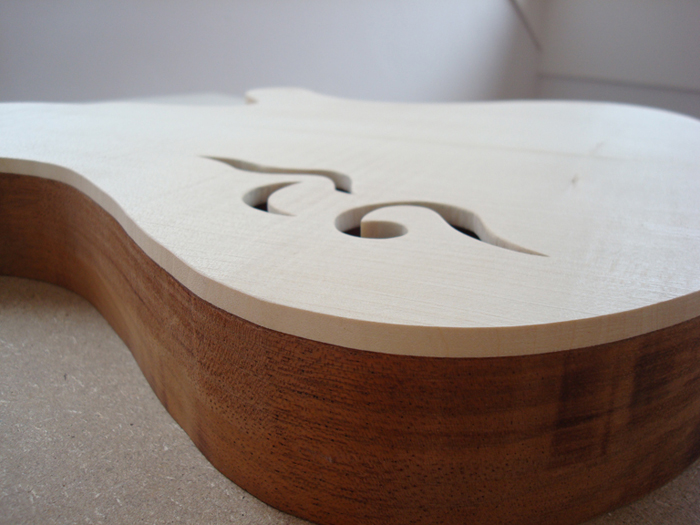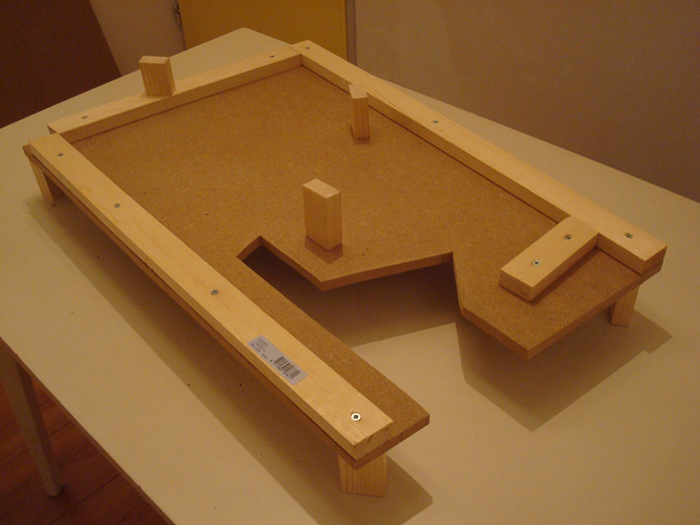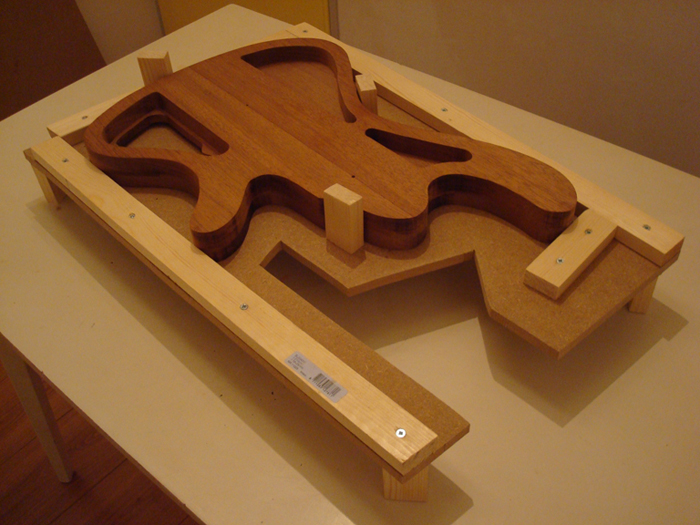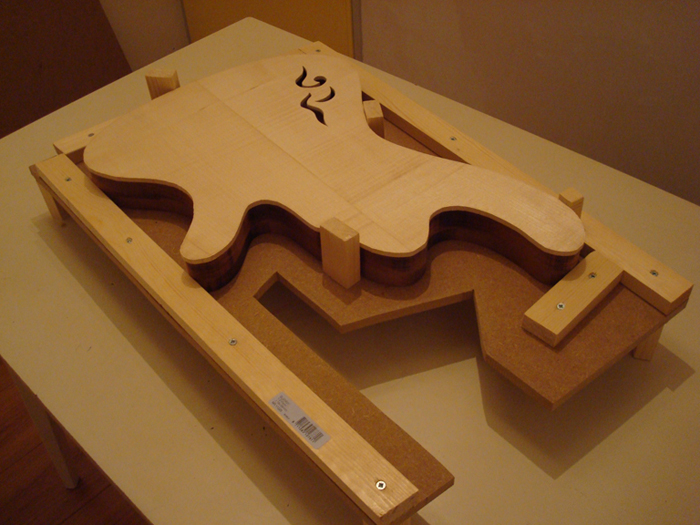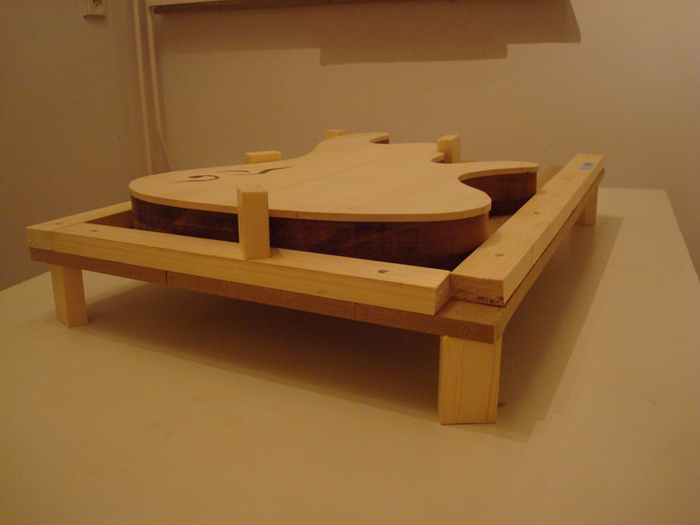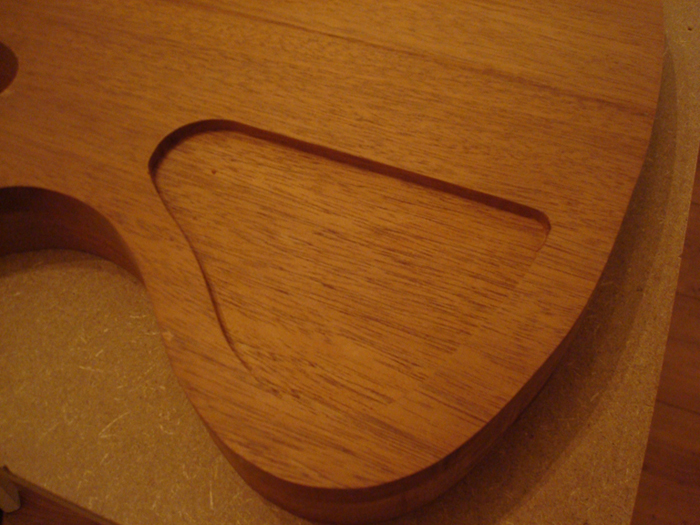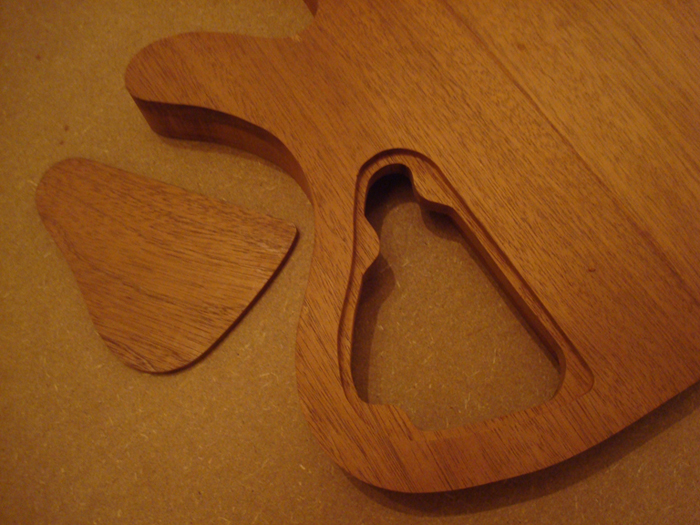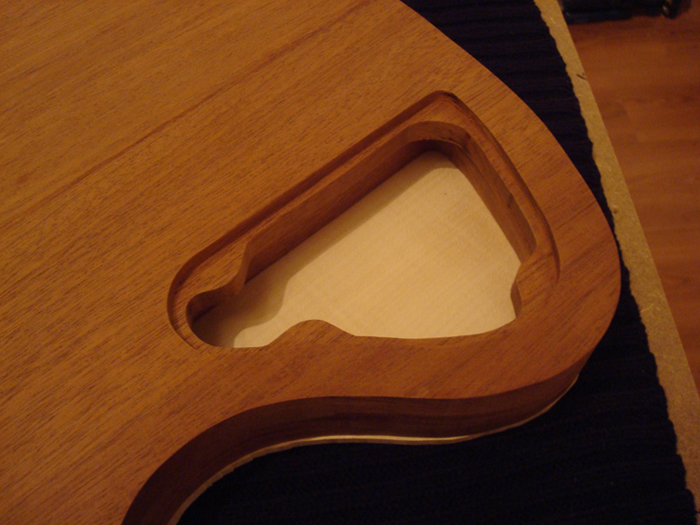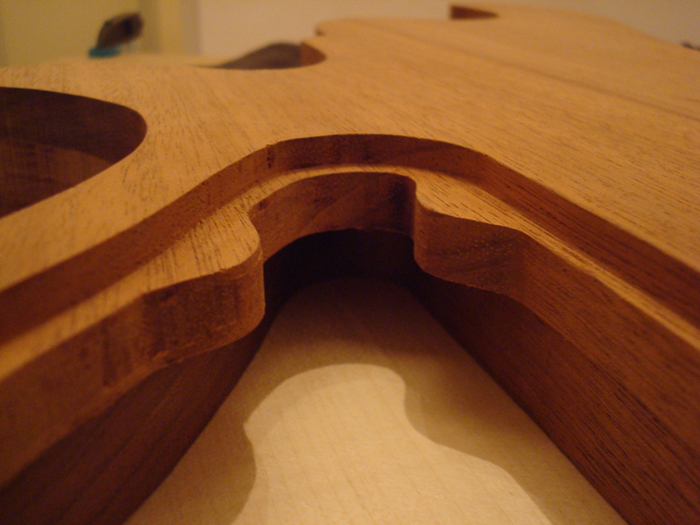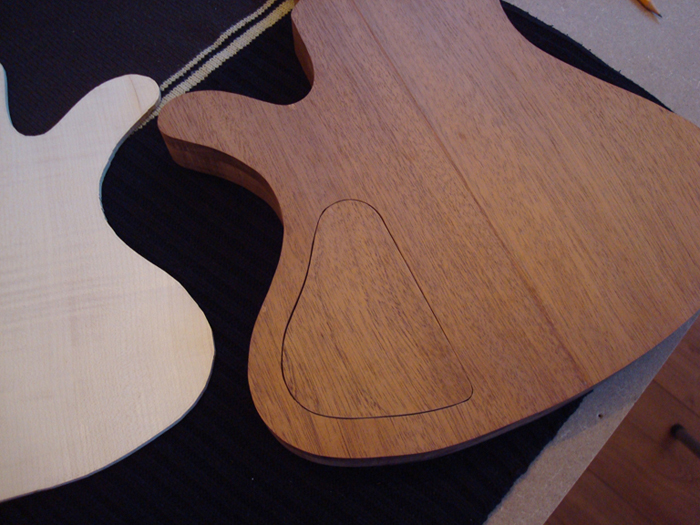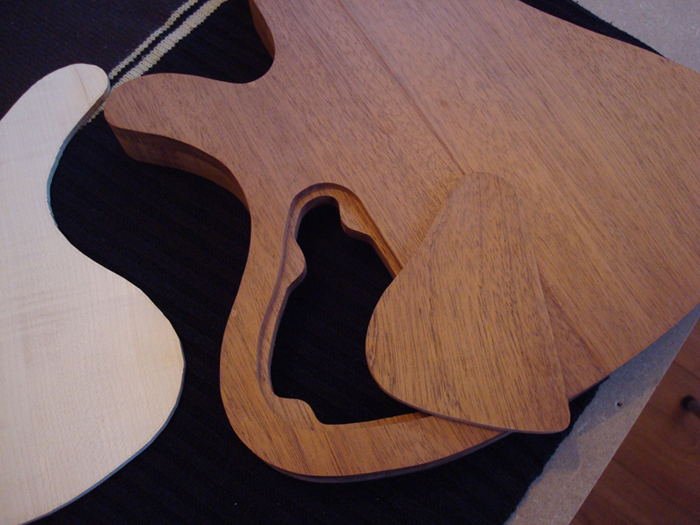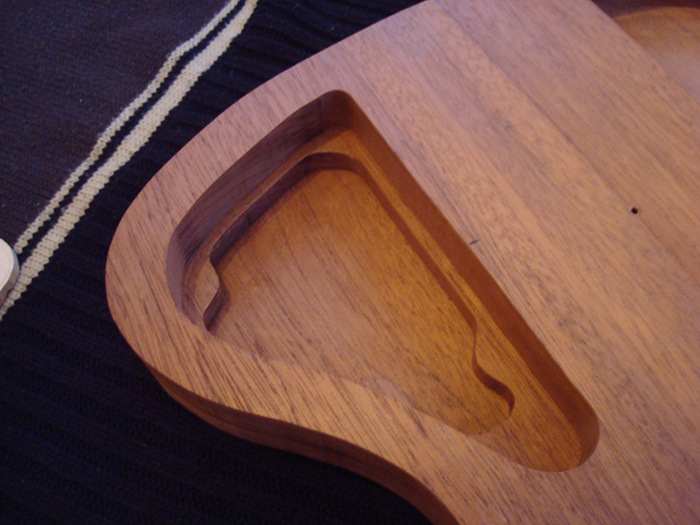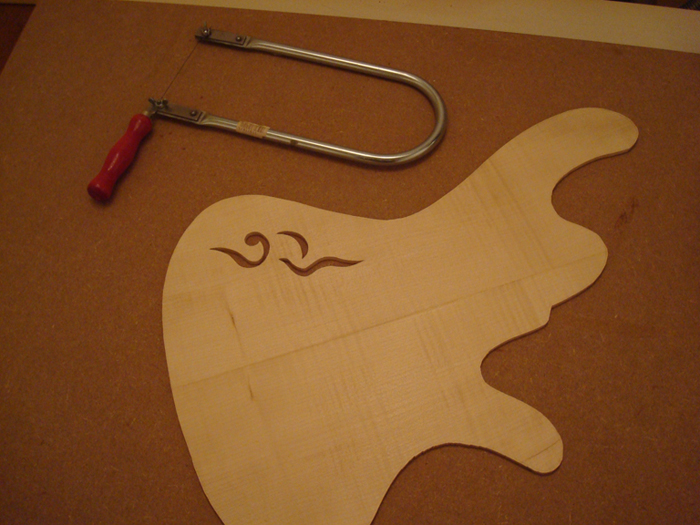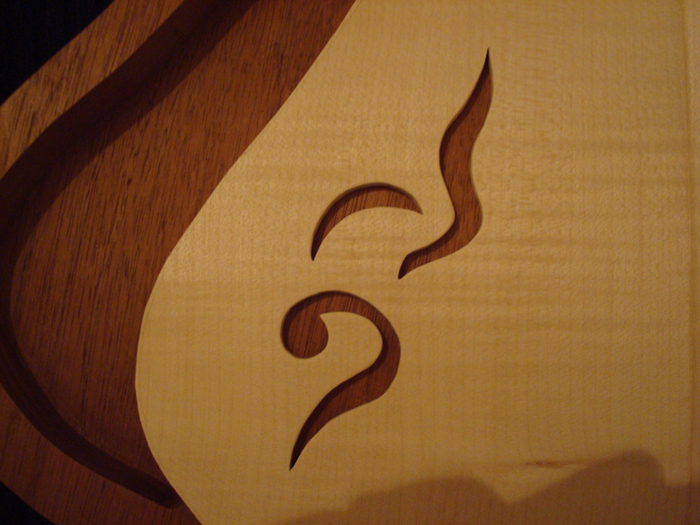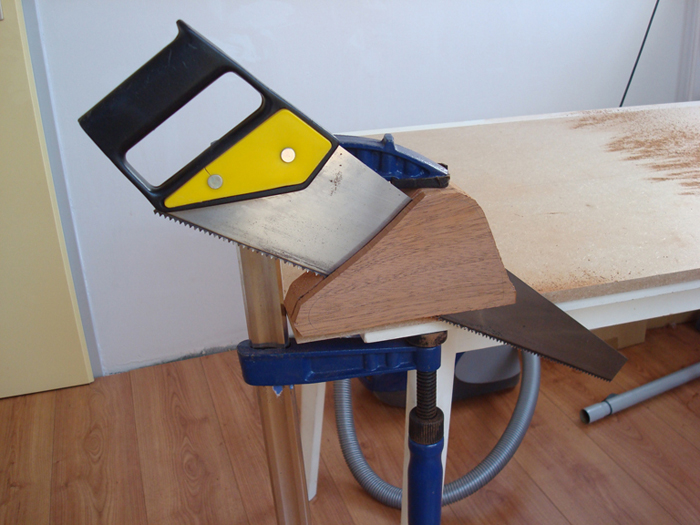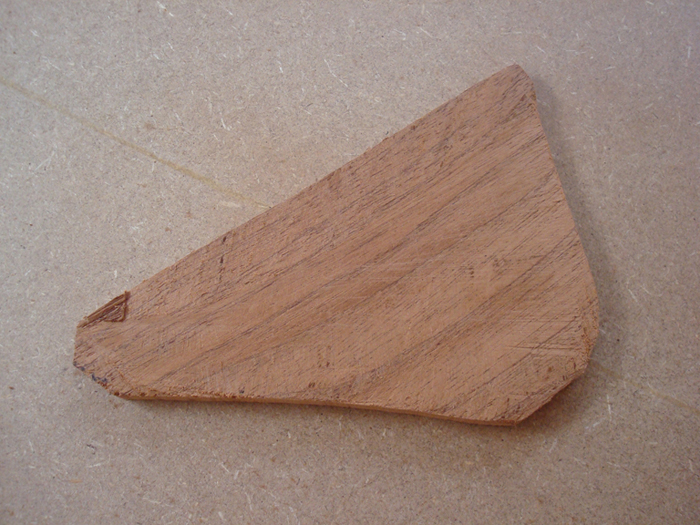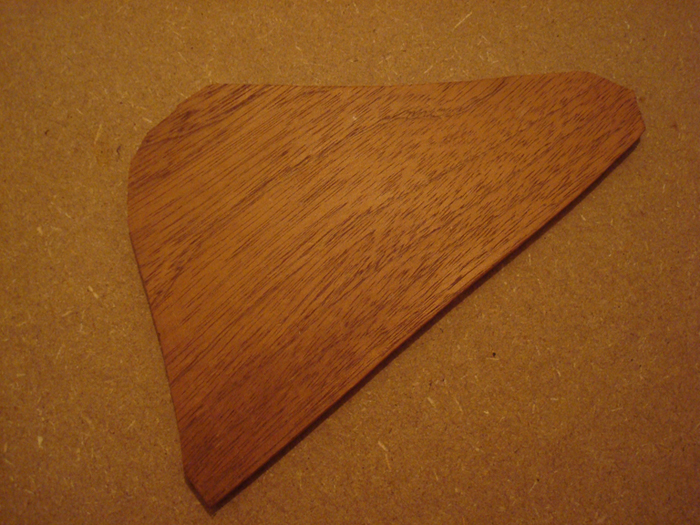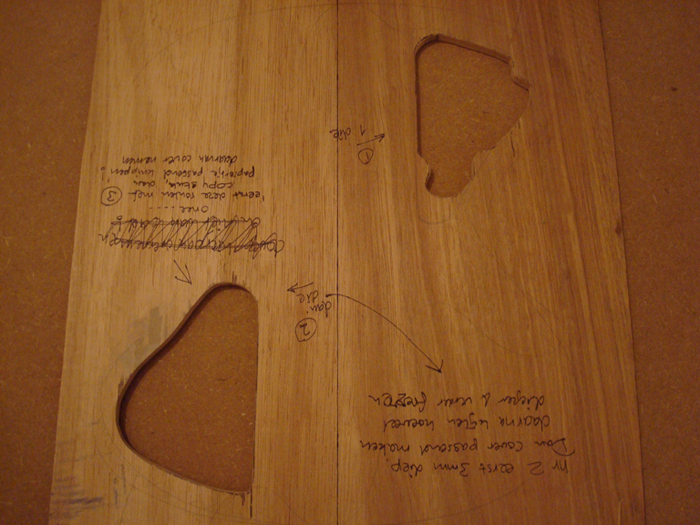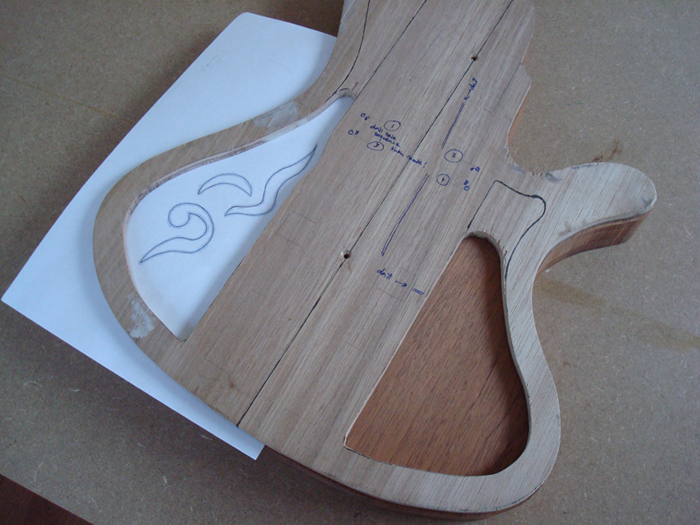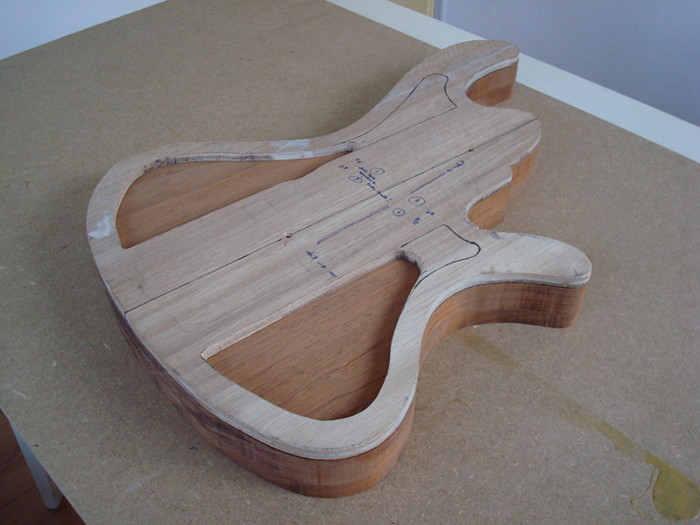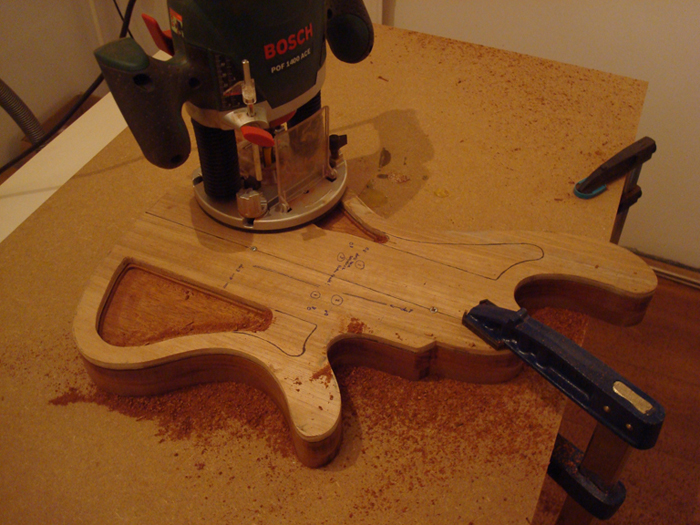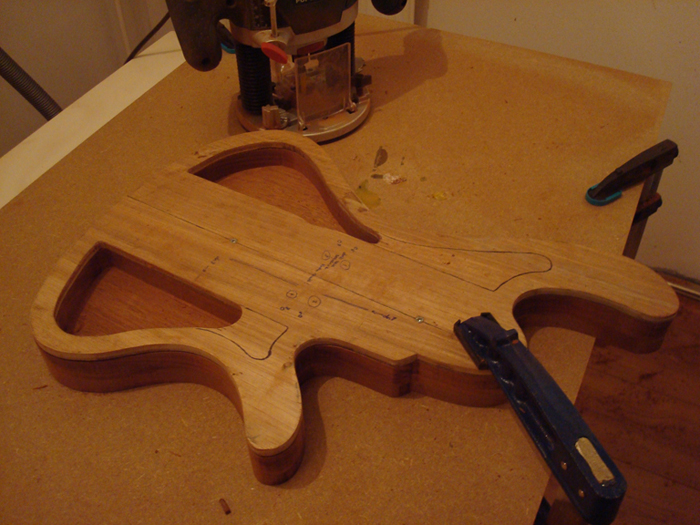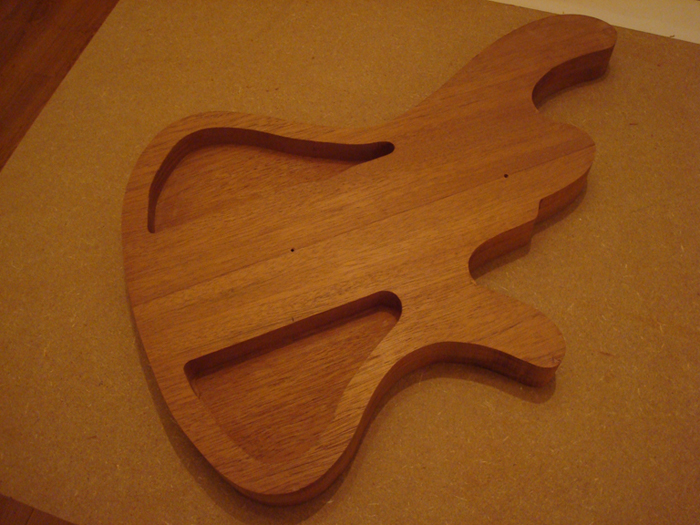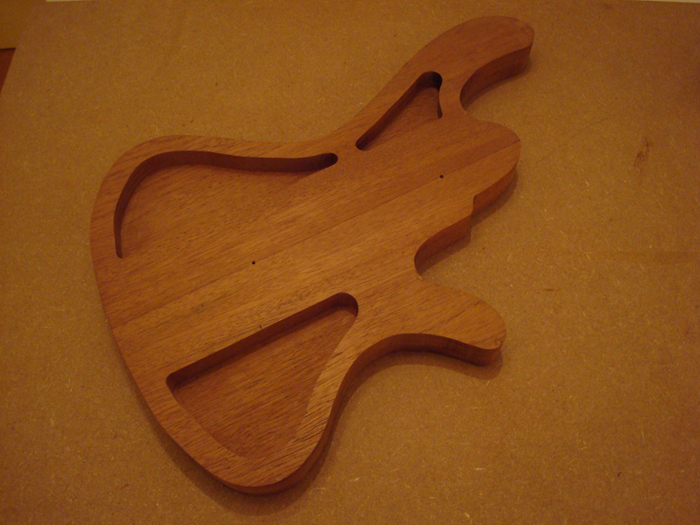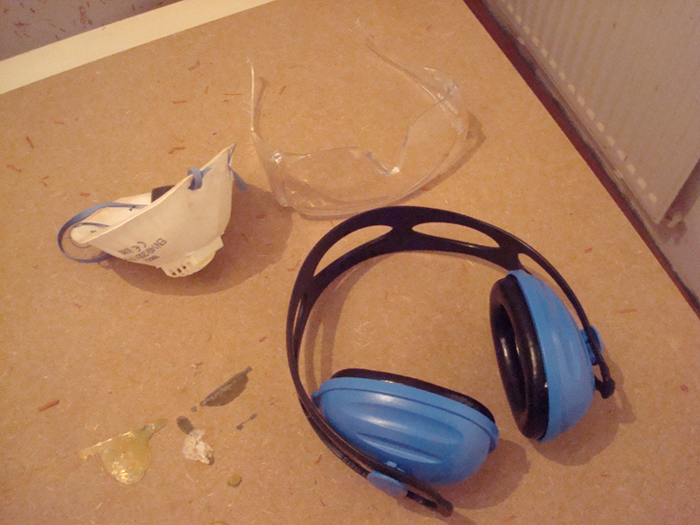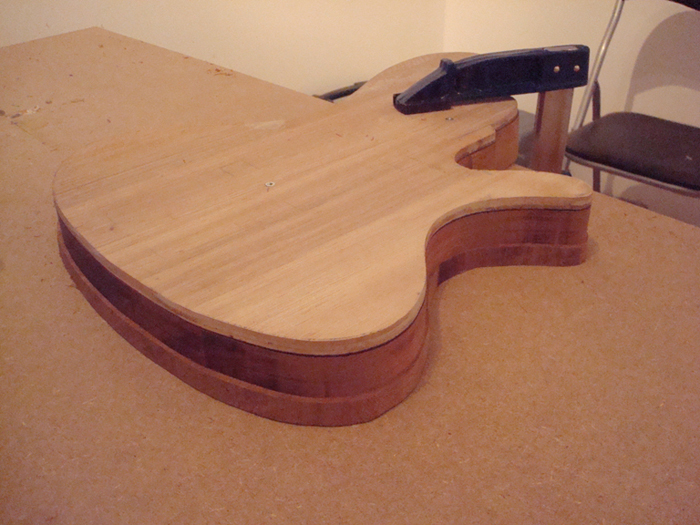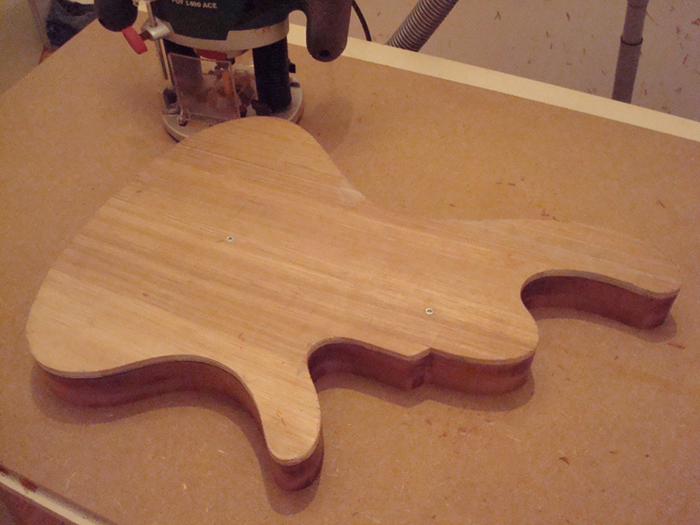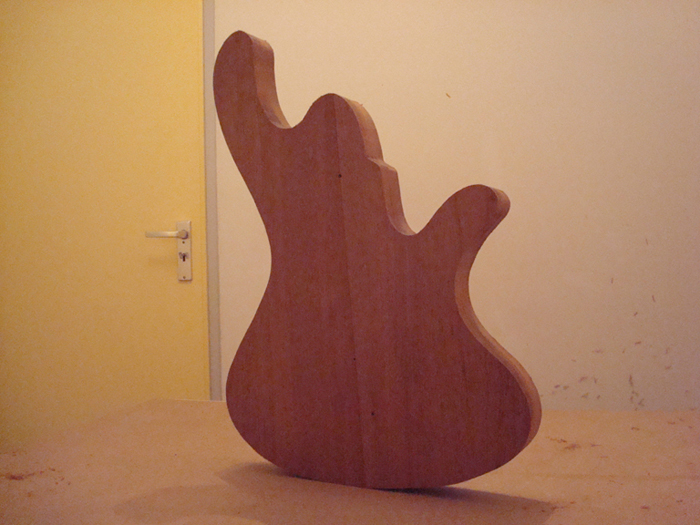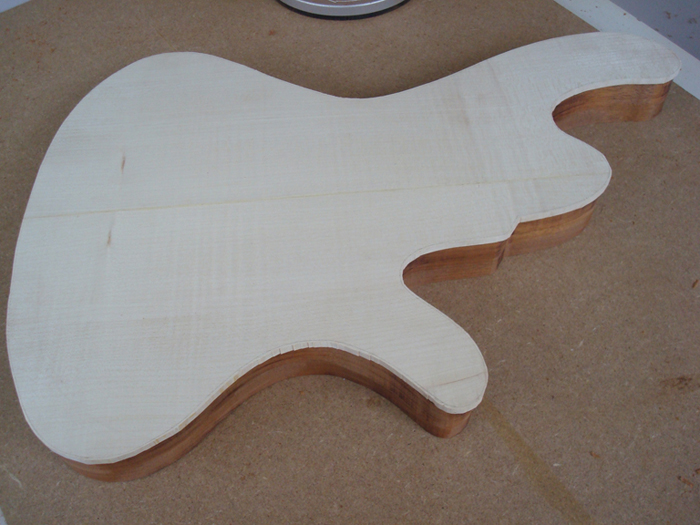Today I did the second rough cut on the body, so that it is only 1 to 2 mm larger than the template. At the horns I removed most of the protruding wood with a rasp. Then I spent a lot of time reparing small imperfections around the outline, where the jigsaw or rasp took out some splinters. I did this by glueing in really small pieces of scrap wood and sanding them flush with the body. I really want it ready for routing against the template by the end of this week.
I extended my workshop with the most important solid body guitar building tool: a router! With 1.400 watts, 28.000 rpm and a 6 mm, 8 mm and 1/4″ collet it’s not a professional tool, but one of the best of the DIY range from Bosch. It also has a 1/10 mm precision depth adjustment, which is very accurate for a router. I ordered two template bits on the internet, one with the ball bearing at the end of the bit and one with the ball bearing on the shank.
With my new jigsaw, router, clamps, glue, rasps and all other stuff I bought, I’ve got almost all tools needed. Next month I might buy a spokeshave, drill stand and a lot of sandpaper.
So I guess I’ve come to the scary part: routing out the body. Well, first, I’ll clean up my ‘shop’. Then, route some piece of scrap wood, because I never did this before and then I move on to the body. After that, I’ve got to route out the cavities for sound holes and electronics, cut out the sound holes and glue on the top. I can’t wait to see the body at this stage…
